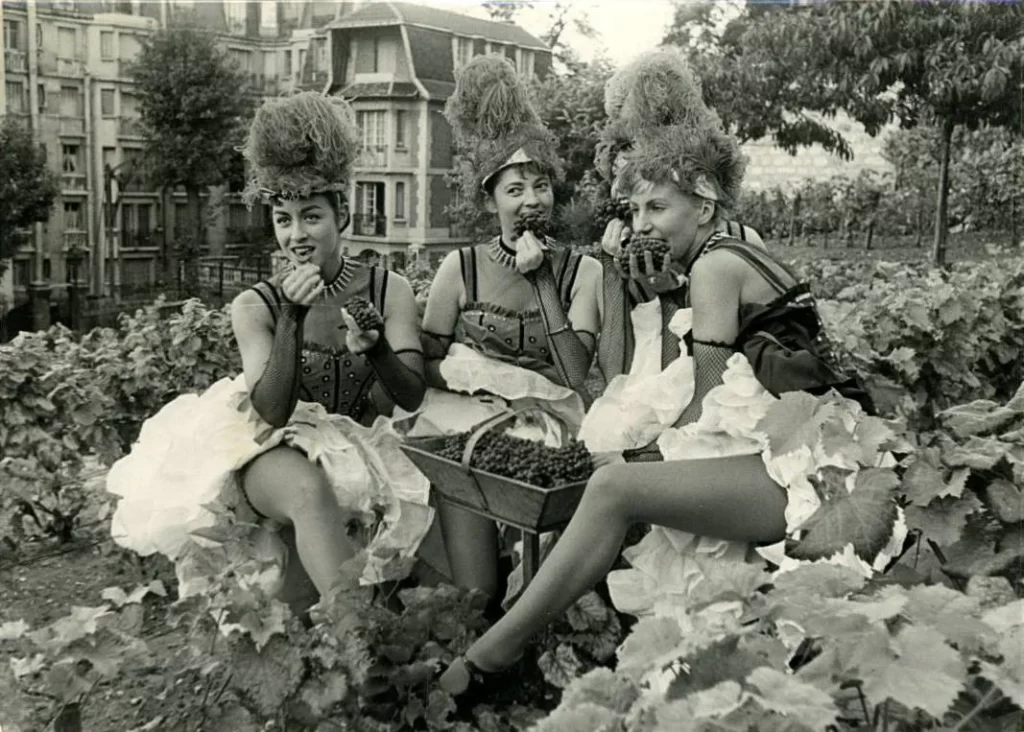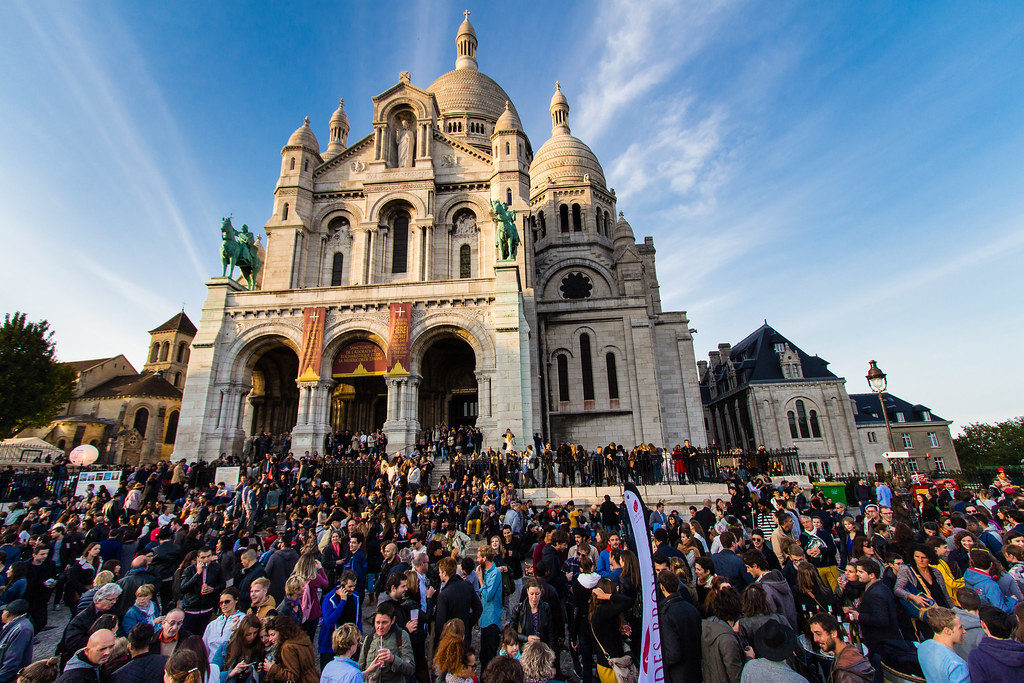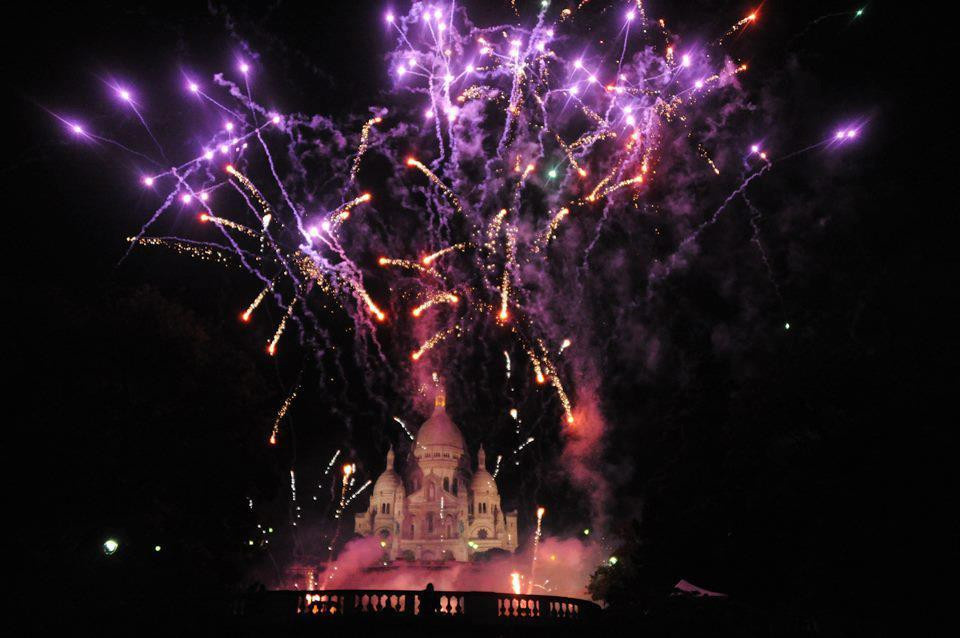You can find them in several hidden, or discreet places, in the capital. Little known, they testify to the importance of grape growing in Paris several centuries ago, and are still cultivated and harvested every year.
Twenty centuries ago, France was already known for many great wine regions: the Rhone Valley – where the first vines were planted by the Greek settlers who founded Massilia (Marseille), around 600 B.C. – and then by the Romans, that will give it a decisive, definitive rise.
Then came Burgundy, Alsace, then, much later, Bordeaux, Orléans, Auvergne (Saint Pourçain), and… Île-de-France, including Paris.
And yes! The capital of France was once a reference for wine, especially at a time when wine was of poor quality and also consumed with water (sometimes even by children).
At that time, the capital was home to a number of vineyards, which have virtually all disappeared today.
Today, five of them remain – relics of an important urban and suburban vineyard – the best known of which is the Montmartre vineyard, with its famous annual harvest festival established in 1934, which brings together sympatico crowds every year.
To be more precise, these vines scattered in the heart of Parisian parks are not the remains of old wineries of the capital, but rather “new” vines planted posteriori, in the twentieth century, in the historic districts of Parisian vineyards.
Some years, the City of Paris, which manages the vineyards of the city, even offers to harvest in these micro vineyards of the capital. All the vineyards are very accessible, at least from a visual point of view, because guided tours are only offered in the vineyards of Montmartre.
So, during your travels in one of your favorite neighborhoods – Butte Bergeyre, Bercy, Montmartre, Vaugirard, Belleville -, take the opportunity to discover the vineyards of our capital!
We will begin by presenting Le Clos Montmartre, arguably the most famous urban clos in the world.

♥
The world-famous Clos Montmartre occupies part of the northern flank of the Butte Montmartre in the 18th arrondissement of Paris. It is at the corner of rue Saint-Vincent and rue des Saules (entrance 14-18 rue des Saules).
Vineyards of Montmartre (75018 PARIS)
Year of planting: 1932
Surface: 1556m²
Number of plants: 1726
Grape varieties: 27 different, including 75% Gamay, 20% Pinot and a few plants of Sibel, Merlot, Sauvignon blanc, Gewurztraminer and Riesling.
Production: 1000 kg, 2400 bottles of 50 cl of red wine and 900 bottles of rosé wine.
Brief history
Since Gallo-Roman times – beginning of our area, 52 BC. exactly, date of the conquest of Gaul by Julius Caesar –, Montmartre’s vineyards had been growing grapes to make wine. They reached their peak in the 18th century, before gradually disappearing, like other Parisian vineyards, as a result of the city’s massive urbanization.
First vine planted in the 12th century
The hill of Montmartre, as well as Clignancourt and the Goutte d’Or, were the property of the abbey of Saint-Denis. The vineyards of Gentilly, Vanves and Suresnes belonged to the abbey of Saint-Germain-des-Prés.
The first vine of Montmartre, the oldest in Paris, would have been planted by Adélaïde de Savoy, the first abbess of the Abbey of Montmartre, an Abbey founded by her husband, King Louis VI le Gros. When her husband died, in 1137, she retired there. Her tomb is in the church of Saint-Pierre-de-Montmartre.
When Montmartre was annexed to Paris in 1860, the Parisian vineyards were about to disappear. To counter a real estate project of the city of Paris in 1921 on the very site of the vineyards, Francisque Poulbot, decided, with a group of passionate Montmartrois, to create the Clos Montmartre.
Thus, a vineyard of almost 2000 plants was planted in 1932, at the foot of the Sacré-Coeur. It is located in the immediate vicinity of the legendary cabaret «Le Lapin agile», «Le Lapin agile», the Montmartre Museum, which overlooks it, and the restaurant “La Belle Franquette”, an institution in Montmartre.
Two years later, the first harvest festival was inaugurated.
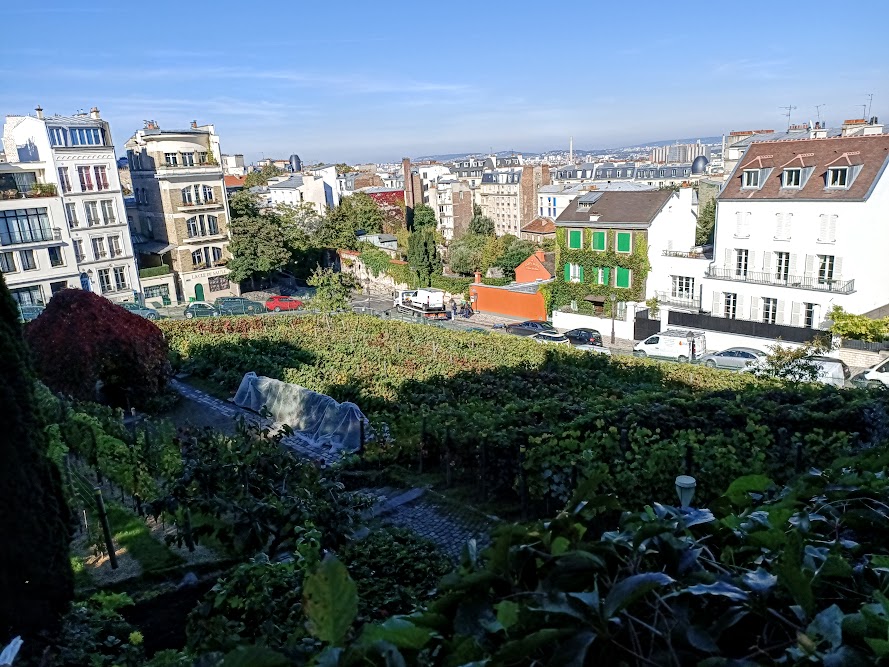

These fervent defenders of the heritage of Montmartre have also imagined to form a Republic, “La République de Montmartre”.
One of his first actions was to reserve the proceeds of the sale of Montmartre wine to finance exclusively social actions in the 18th arrondissement. She has remained true to this idea and continues to do so today.
With revenues from a production that oscillates between 1 and 1.8 tonne of grapes a year (about 2,000 bottles of 50 cl), this is far from negligible.
Clos Montmartre, a kaleidoscope of aromas
Clos Montmartre is vinified in the cellars of the town hall of the 18th arrondissement with innovative techniques and without sulphite.
« It is an exceptional wine that does not exist elsewhere » explains Sylviane Leplâtre, the oenologist of the Clos. It comes from 30 different grape varieties. The plot is exposed to the north, which gives it a little acidity, in a fairly high latitude. The vines are pruned to provide maximum sunshine. In terms of taste, it’s a kaleidoscope of very complex aromas. The tannins are very tender, round. It is very fresh. A very pleasant wine, unlike any other.
The production is about 1500 bottles of 50 cl red wine and 900 of rosé wine. And the quality is there! During a blind tasting, the wines of Clos Montmartre were qualified high level by the president of the Association of Sommeliers of Paris-Île de France.
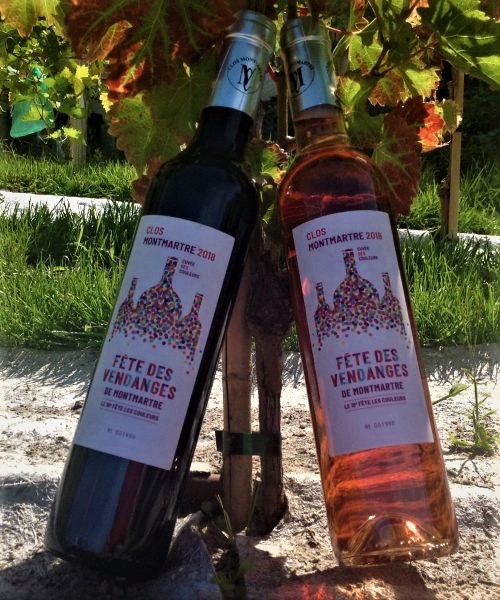
On the other side of the hill, at the Arènes de Montmartre, a few vines have also been planted: if you have the opportunity to enter these arenas, which are open to the public for certain events such as the Arènes lyriques or the Festival des Arènes, you’ll find them there!
A beautiful vineyard, to be discovered all year round in Montmartre during a stroll through the Sacré-Cœur district!
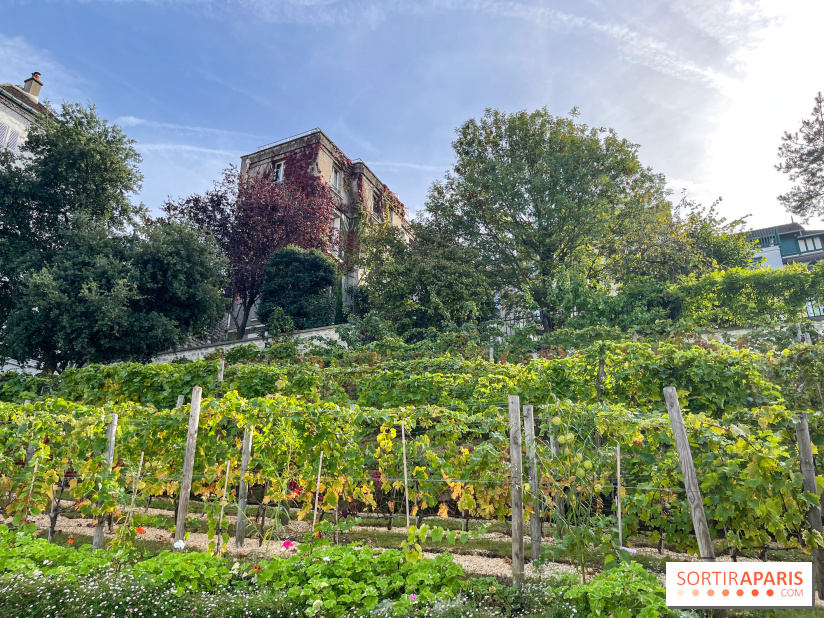
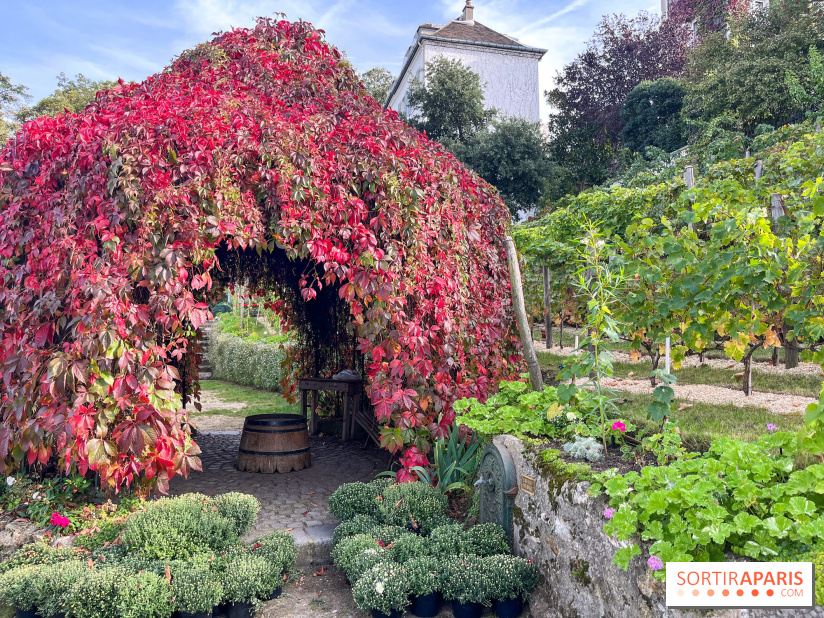
Did you know it?
By decision of the Republic of Montmartre, since 1934, every second weekend of October, Montmartre celebrates its wine tradition by organizing a harvest festival and then welcoming the arrival of the new cuvée of its vineyard, “Le Clos de Montmartre”.
The occasion, as you can guess, of joyful festivities under the tutelage of Bacchus! Harvest in the presence of the President of the Republic… of Montmartre, the Mayor of the 18th arrondissement, the Mayor of Paris, local brotherhoods, and all the people of Paris. Giant buffet, tasting, dancing ball, fireworks to close this moment of joy, sharing, communion.




… 1958 who with? Try to guess? ; ))

